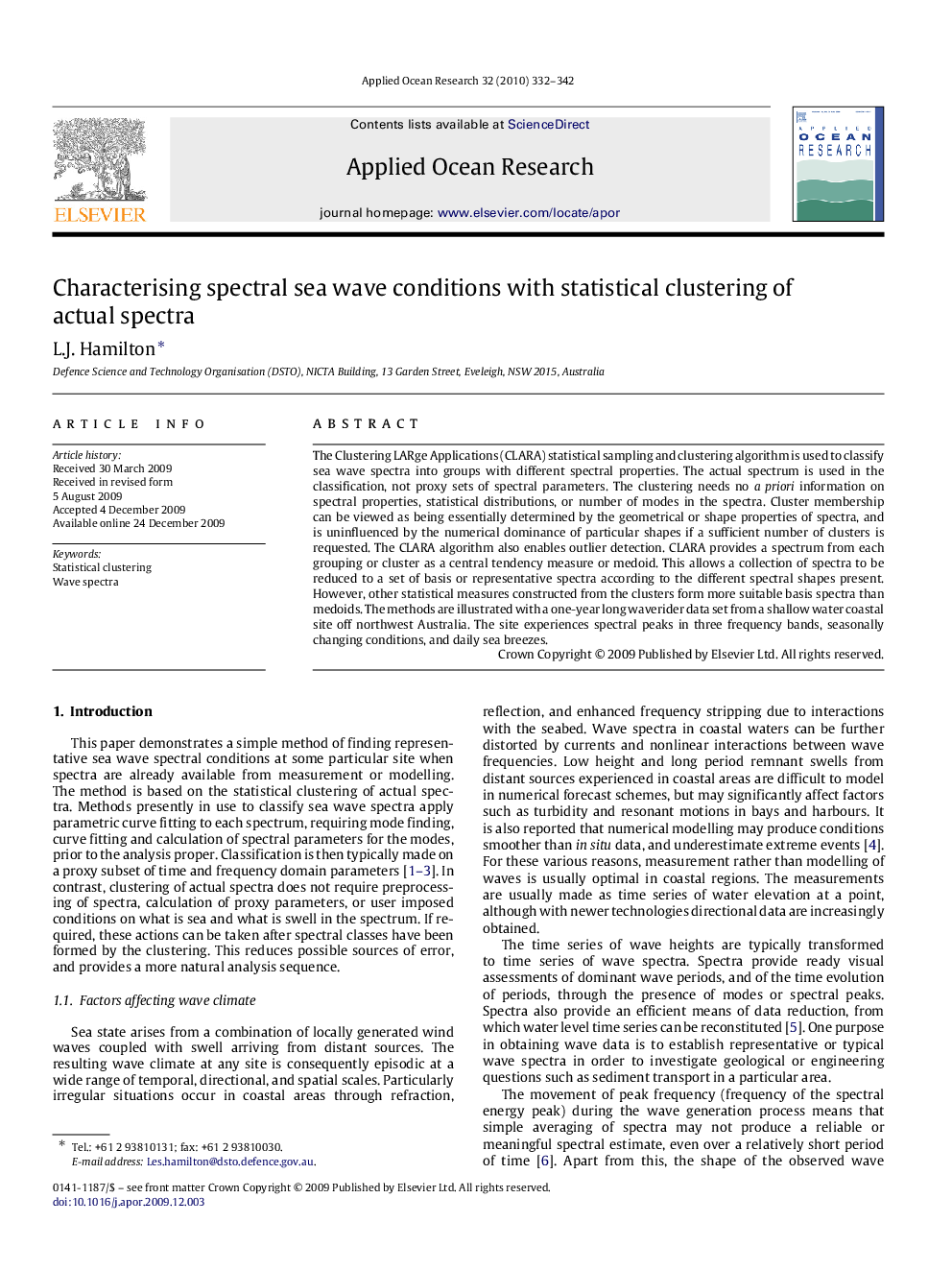| Article ID | Journal | Published Year | Pages | File Type |
|---|---|---|---|---|
| 1720298 | Applied Ocean Research | 2010 | 11 Pages |
The Clustering LARge Applications (CLARA) statistical sampling and clustering algorithm is used to classify sea wave spectra into groups with different spectral properties. The actual spectrum is used in the classification, not proxy sets of spectral parameters. The clustering needs no a priori information on spectral properties, statistical distributions, or number of modes in the spectra. Cluster membership can be viewed as being essentially determined by the geometrical or shape properties of spectra, and is uninfluenced by the numerical dominance of particular shapes if a sufficient number of clusters is requested. The CLARA algorithm also enables outlier detection. CLARA provides a spectrum from each grouping or cluster as a central tendency measure or medoid. This allows a collection of spectra to be reduced to a set of basis or representative spectra according to the different spectral shapes present. However, other statistical measures constructed from the clusters form more suitable basis spectra than medoids. The methods are illustrated with a one-year long waverider data set from a shallow water coastal site off northwest Australia. The site experiences spectral peaks in three frequency bands, seasonally changing conditions, and daily sea breezes.
